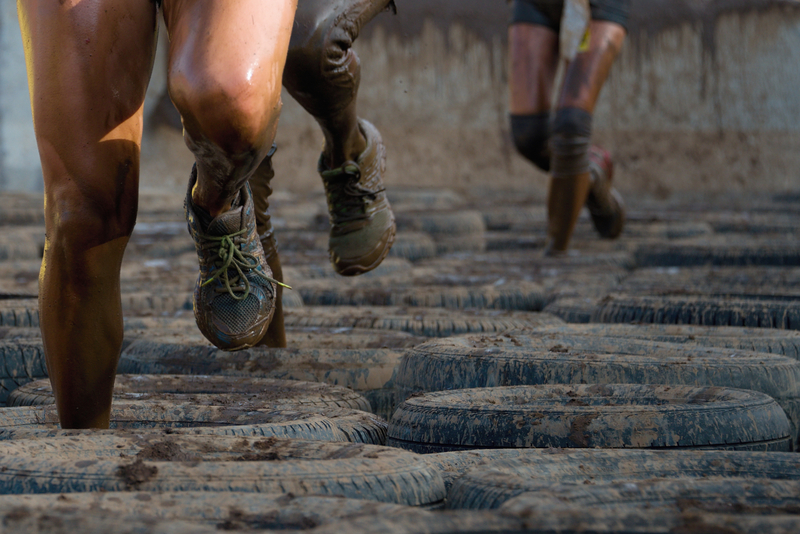How to Safely Dispose of Masks, Gloves, and Other PPE
Personal Protective Equipment (PPE) such as masks, gloves, face shields, and gowns, have become an indispensable part of daily life, especially since the onset of the COVID-19 pandemic. While these items are essential for protecting our health and the health of others, their widespread and sometimes improper disposal pose serious environmental and public health threats. This comprehensive guide will detail how to safely dispose of masks, gloves, and other PPE, the risks of improper disposal, and the ecological impact, as well as providing practical tips and best practices.
Why Proper Disposal of PPE is Crucial
Understanding why proper PPE disposal is important forms the foundation for responsible action. Irresponsible disposal of single-use masks, gloves, and other protective gear can have far-reaching consequences:
- Public Health Hazard: Contaminated PPE can carry pathogens, increasing the risk of spreading diseases if not disposed of correctly.
- Environmental Impact: Most PPE is made with plastics or synthetic materials, which are non-biodegradable and pollute lands and waterways.
- Wildlife Threats: Animals may ingest or become entangled in discarded PPE.
Safe PPE disposal is not just a personal responsibility but a social one, protecting your community and environment.

The Basics of PPE Waste Management
Before diving into specific instructions, it's important to recognize the common types of PPE we encounter and general strategies for disposing of protective equipment safely:
- Single-use masks (surgical or medical masks; some cloth masks may also become waste as they wear out)
- Gloves (latex, nitrile, or vinyl)
- Face shields and goggles
- Gowns and aprons
- Other single-use PPE (such as shoe covers or hair covers)
General Rules for PPE Disposal
- Never discard PPE in open areas or public spaces.
- Do not flush masks or gloves down toilets or sinks.
- Separate PPE waste from household recyclables.
- Use a designated, lined trash bin if possible.
- Always wash or sanitize hands after handling used PPE.
How to Dispose of Face Masks Safely
Step-by-Step Guide for Throwing Away Single-Use Masks
- Remove Carefully: Wash your hands before removing your face mask. Avoid touching the front part, and only handle by the ear loops or ties.
- Contain: Immediately place the used mask in a dedicated, lined trash bin. If no bin is nearby, temporarily secure it in a sealable bag until a bin is available.
- Seal: Secure the trash bag when it is full or after disposing of contaminated PPE. Double-bag if PPE is from a sick household member or healthcare setting.
- Sanitize: Once disposed, thoroughly wash your hands with soap and water for at least 20 seconds or use a hand sanitizer.
Note for Cloth Masks: Unlike disposable masks, cloth masks can be washed, sanitized, and reused. When they are no longer usable, dispose of them as solid waste; do not place them in recyclables unless specified by local regulations.
What Not To Do When Disposing of Masks
- Never discard masks on streets, parks, or beaches. This not only litters the environment but exposes others to health risks.
- Do not recycle single-use masks with regular recyclables. Most are made from non-recyclable materials like polypropylene.
- Avoid burning masks at home. Burning can release toxic chemicals.
How to Dispose of Gloves Properly
Best Practices for Throwing Away Gloves
- Careful Removal: Peel off each glove from the wrist, turning it inside out to trap contaminants inside. Avoid touching the outside surface of the glove with bare skin.
- Dispose Promptly: Place gloves directly into a sealed trash bin. Double-bagging is recommended for gloves used in medical care or if exposed to known contaminants.
- Hand Hygiene: Wash or sanitize hands immediately after glove removal and disposal. This reduces the risk of cross-contamination.
Important: Single-use gloves are not recyclable and should never be put into recycling bins. Discard in regular landfill waste.
You Should Not...
- Litter used gloves in parking lots, shopping carts, or sidewalks.
- Reuse disposable gloves. They are designed for single-use only.
- Dispose of gloves down the toilet. This can lead to plumbing problems and environmental pollution.
What About Face Shields, Gowns, and Other PPE?
While masks and gloves are most commonly used by the general public, other PPE items require safe handling and disposal:
- Face Shields: Reusable face shields should be sanitized after each use and can typically be discarded in landfill waste once broken or worn out. Check with local authorities if certain plastics are recyclable.
- Gowns, Aprons, and Other Protective Clothing: Treat single-use gowns and aprons as contaminated waste, disposing of them in sealed, lined trash bins. Reusable items should be laundered separately and thoroughly dried.
- Shoe Covers and Hair Covers: Typically considered single-use. Discard in landfill waste after use, never in recycling.
Following Local Regulations is Key
Some cities or municipal waste systems have adopted special programs for handling PPE waste, especially from healthcare facilities, public transport, and other high-risk areas. Always check and follow local guidelines before disposal.
The Environmental Impact of PPE Litter
PPE Waste: An Emerging Ecological Crisis
With billions of people using masks and gloves every day, improper PPE disposal has rapidly become a significant source of environmental pollution. Key issues include:
- Plastic Pollution: Most PPE is made from plastics that can take hundreds of years to decompose, leaching microplastics into the soil and water systems.
- Marine and Wildlife Risks: Discarded masks and gloves are increasingly found in oceans, rivers, and forests, where animals ingest them or become entangled.
- Blockage of Drains and Sewers: Disposed PPE can block drainage systems, contributing to urban flooding and sanitation issues.
To minimize the impact, it's crucial to dispose of PPE correctly and opt for reusable alternatives whenever possible.
Can PPE Be Recycled?
Understanding the Recycling Limitations
While recycling is ideal for reducing waste, most single-use PPE is made from mixed or contaminated materials, making it unsuitable for standard recycling streams. Masks are typically constructed with layers of non-woven polypropylene. Gloves are often latex, nitrile, or vinyl--none of which are accepted in most curbside recycling programs.
Specialized Take-Back Programs
Some organizations and companies have launched pilot or specialty PPE recycling initiatives. For instance, programs like TerraCycle's PPE Zero Waste Box enable bulk PPE items to be collected and shipped to specialized facilities for recycling.
- Check for Local Drop-Off Points: Pharmacies, hospitals, or community centers may accept used PPE for safe disposal or recycling.
- Use Mail-Back Recycling Boxes: For workplaces or schools generating large PPE waste volumes, consider partnering with PPE-specific recycling services.
Note: For most households, it remains safest and most practical to dispose of PPE in landfill waste to reduce risks of contamination.
Safe Disposal During Infectious Disease Outbreaks
Special Handling for Contaminated PPE
- Extra Precautions: If PPE is used by someone ill (e.g., with COVID-19, flu, or other infectious diseases), seal it in a plastic bag before placing it in the trash.
- Mark the Trash: If there's concern, label the bag "hazardous" before curbside collection, in accordance with your local health department's advice.
- Delay Disposal: Some authorities recommend letting sealed bags sit for a few days before disposal to reduce the risk of transmission to waste workers.
- Use Gloves for Handling Waste: Wear a new pair of disposable gloves when handling sick person's waste, and discard gloves immediately afterwards.
Alternatives to Single-Use PPE: Reducing the Waste Burden
Opting for Reusable PPE
One of the best ways to minimize PPE waste is to use reusable options where appropriate:
- Cloth Face Masks: Washable and reusable, they significantly reduce the volume of discarded masks.
- Reusable Face Shields: Sanitize with disinfectants between uses; they're durable and environmentally friendly.
- Reusable Gowns and Aprons: Especially in healthcare environments, they can be laundered and reused safely.
Disposing of Worn-Out Reusables
- Once these items are no longer functional, dispose of them in landfill waste, unless your local authority has a textile recycling program or specific PPE collection.
- Do not place soiled cloth masks and clothing with regular recyclables.
Protecting Waste Workers: An Overlooked Priority
Sanitation workers are at increased risk during pandemics and outbreaks due to their potential exposure to contaminated PPE. To help protect them:
- Seal all PPE waste bags securely.
- Label bags as "PPE waste" or "hazardous" if possible.
- Double-bag waste if anyone in your household is sick.
Never leave loose masks or gloves outside bins where others may have to handle them directly.
PPE Disposal: Best Practices Summary
- Remove PPE carefully, avoiding direct contact with outer surfaces.
- Immediately place PPE waste in a lined, sealed trash bin.
- Never dispose of PPE in recycling bins.
- Wash or sanitize hands after handling PPE.
- Follow local guidelines and participate in take-back programs when available.
- Educate others about proper disposal to protect public health and the environment.

Frequently Asked Questions About PPE Disposal
Can I Recycle Single-Use Masks or Gloves?
No. Most single-use masks and gloves are not recyclable through residential recycling programs. They should be disposed of in landfill waste to avoid contamination and harm to recycling workers.
What Should I Do If I Find PPE Litter?
If you find discarded masks or gloves in public places, use a litter-picker or gloves to pick them up, then place them in a sealable bag and dispose of them in a trash bin. Always wash your hands after handling.
How Do I Dispose of PPE Used by a Sick Person?
Wear gloves when handling. Double-bag the contaminated PPE and seal tightly. Follow any quarantine-specific waste guidelines issued by your local health department.
Is Burning PPE a Safe Option?
No. Burning PPE in home settings can release toxic fumes and microplastics. Only certified facilities with proper filtration should incinerate medical waste.
Conclusion: Everyone's Role in PPE Disposal Safety
Proper disposal of masks, gloves, and other PPE protects not only yourself but the wider community and the planet. By following the outlined best practices, opting for reusable alternatives when possible, and educating those around you, you help to minimize public health risks and environmental harm. Let's all do our part to keep our cities, wildlife, and oceans clean by taking responsible action with our PPE waste.
For more information, always refer to guidance from your local health department or waste management authority.
Together, we can make a significant impact--one mask, one glove, and one piece of PPE at a time.